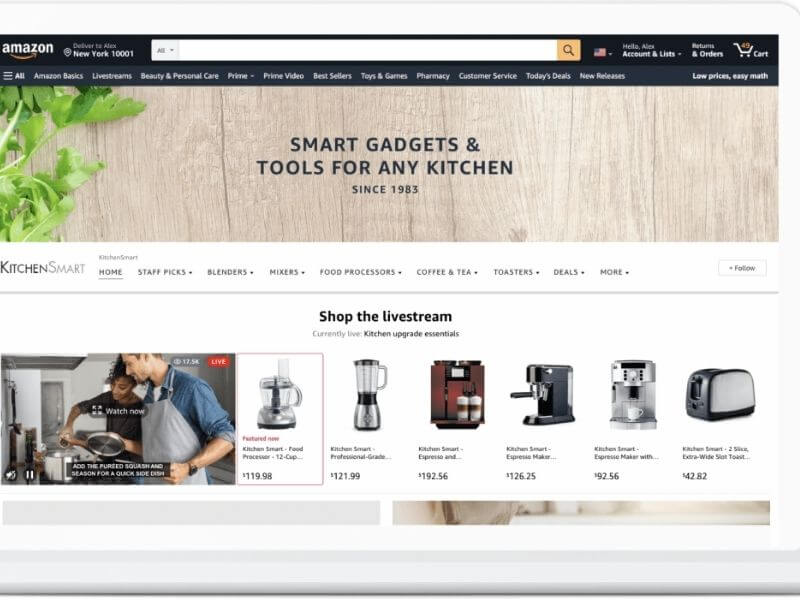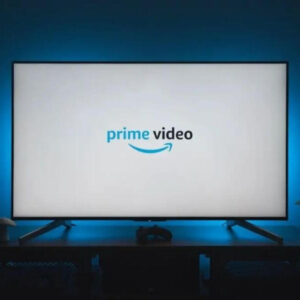What is an Amazon Storefront? How to set up an Amazon Store Whether you’ve selected your first product and want to set up shop online, or have built a brand and want to go global, an online store is a great way to connect with customers and tap the opportunities available through ecommerce.
Building a digital storefront so you can manage inventory and ship goods can be a major hurdle on your way to success. It takes time and resources to create your own direct-to-consumer website, maintain a presence on social media, or sell through other online channels. Luckily, there are resources to help simplify the process, plus best practices you can follow to ensure a smooth experience.
We’ll walk you through how to create an online store, and also cover a suite of Amazon tools you can use to share products with millions of customers.
What is an Amazon Storefront?
Available to brand-registered sellers, Storefronts allow brands to showcase all of their products in a single location, highlight top content, photography, and graphics, and customize with personalized branding and logos. With an optimized Storefront, you can also capture the attention of shoppers and use it as a landing page for advertisements (for Sponsored Brands, display ad campaigns, social media and influencer marketing, and more) to showcase your full product assortment.
In essence, an Amazon Storefront serves as a miniature ecommerce website that allows brands to create unique, brand-specific shopping experiences for their customers while still selling products through Amazon to Amazon customers.
Storefronts are also helpful for sellers who want to better understand shoppers’ buying patterns. Amazon created Store Insights—a tool that shows brands the exact amount of traffic and sales their Storefront receives. This feature helps brands see how customers are behaving, adapt their marketing strategy, and then execute changes that lead to more shopper conversions.
If you’re not sure if you have an Amazon Storefront, or you’re hoping to check out a competitor’s, the easiest way to find it is by clicking on the brand name located under the title on the product detail page. If the brand has an Amazon Storefront, it will show the custom-designed Storefront for that brand’s products.

How to set up an Amazon Store
Before you can create an Amazon Storefront, you will first need to be a Brand Registered seller. This means that you will need to have a trademark on the products you are selling and apply for Brand Registry status. Once you have met the right qualifications, the following steps can be used to create your Amazon Store:
- Gather Your Branding Assets: Like all product listings or brand assets on Amazon, your Storefront is an extension of your brand. It should look and feel like any other branding asset your company manages, including your own website or physical store. With your brand assets in one place, your team can better represent your message and value in the marketplace and create a single, streamlined identity across multiple channels.
- Create a Storefront Strategy: Before you get too far into the process of creating an Amazon Storefront, it’s important to have a purpose in place for why you’re taking this step. A Storefront can be used to educate consumers on your different products, to add more details and specific use cases for individual products, or to simply increase conversions by creating a larger brand presence on Amazon. Having a strategy in place will help your team be able to build the Storefront and place-specific products in the optimal locations.
- Develop Creative Assets and Images: Now comes the fun part. Creating your Storefront means organizing all of your creative assets, product listings, custom graphics and images, and even embedded videos and banners to reinforce your brand presence. The Storefront’s visual design must effectively communicate the relevant content—and the desired action—to consumers while accurately representing the brand’s visual identity and message.
- Invite Feedback and Edits: Once your team has a Storefront design in place, it’s time to get feedback. Because Amazon is such a strong retail channel for so many brands, there should be adequate feedback on this investment. Your sales, marketing, operations, and even finance team should take a look at your Storefront to ensure it is conveying the right message and is set up for success.
- Publish and Refine: Publish your Storefront and start promoting to customers via paid ads and other channels. Be sure to track Store Insights, adapt, and make changes to your Storefront as necessary based on customer interactions, emerging trends, and the evolution of your brand over time. On average, Amazon Stores updated within the past 90 days see 21% more repeat visitors and 35% higher attributed sales per visitor.

The advantages of creating an Amazon Storefront
One of the biggest benefits of creating an Amazon Storefront is the fact that it allows you to further develop your brand story and market that story—creating a memorable, brand-specific shopping experience for your customers.
Another benefit of Storefronts is the fact that they provide access to more comprehensive analytics than you wouldn’t otherwise have access to thanks to Amazon’s Store Insights tool. These analytics can be used to further refine your Storefront’s design as well as your overall marketing and branding strategy on Amazon.
Creating a Storefront gives you the ability to showcase all of your products and top marketing material in a single location. This can be highly beneficial when creating advertising campaigns that are designed to promote brand awareness and market your entire lineup of products since an Amazon Storefront serves as the perfect landing page for such a campaign. It can also be a landing page for off-platform promotions with influencers, display ads, social media, and more.
Get the most out of your Storefront with SupplyKick
We’ve seen firsthand the benefits Amazon Storefronts provide, especially when you have access to a dedicated team that takes time to research, execute, measure, and iterate a successful and cohesive brand marketing strategy. Our Brand Registered partners use Storefronts to share who they are and create a compelling value prop for customers—which ultimately leads to increased Amazon sales.
Connect with us if you’d like to learn more about our Wholesale or Agency partnerships, and how our team of Amazon branding experts and marketers can help you design and publish the best possible Storefront for your brand.

Above is information about What is an Amazon Storefront? How to set up an Amazon Store that we have compiled. Hopefully, through the above content, you have a more detailed understanding of Amazon Storefront. Thank you for reading our post.








